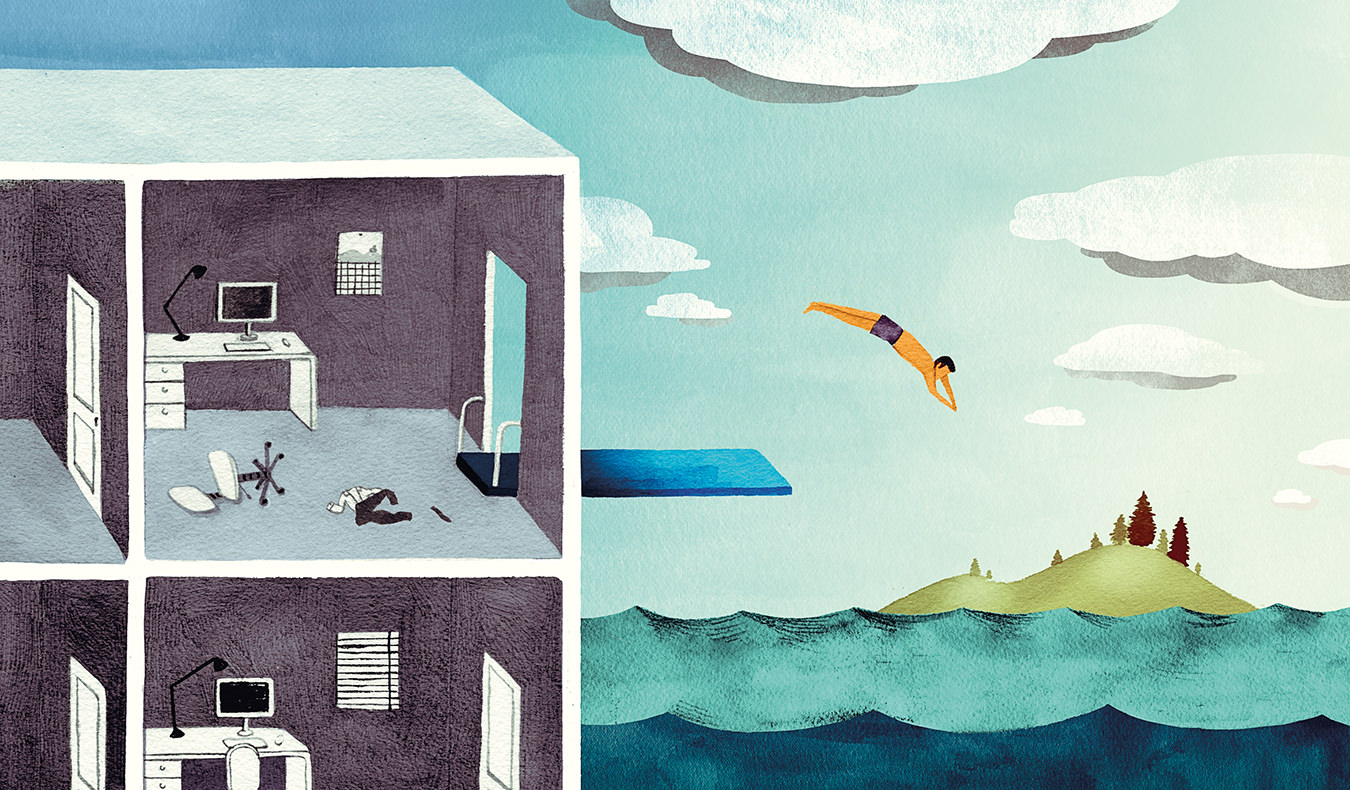The Explorers Club
Having the right stuff.

“What gives value to travel is fear.”
—Albert Camus
To enter the Explorers Club’s Jacobean manor–style home on Manhattan’s Upper East Side is to experience a close encounter of the uncommon kind. From the interior’s dark-mahogany panelling to an unmistakable whiff of old money, it’s easy to imagine that fictional Phileas Fogg should appear, outbound on his 80-day trip around the world. Greeting all in the foyer is an imposing, nine-foot-tall stuffed polar bear. I climb the wooden staircase of the six-storey edifice, its walls crowded with photos of the men (and occasionally women) who have climbed the steps before me: Thor Heyerdahl, Roald Amundsen, Louis and Mary Leakey, Sir Edmund Hillary—a veritable who’s who of 20th-century adventurers.
My goal is to learn—given that most of the photos are of figures long dead—what’s left to discover in the 21st century. Or, put another, more worrisome way: has it all been done? With the Earth’s heights and ocean depths attained, with its antipodes reached and many of its mysteries seemingly resolved, is the future of the celebrated Explorers Club just a paltry footnote on the achievements of its past?
At the time of my visit, high in the Explorers Club’s labyrinthine building, Richard Wiese is president—the youngest-ever—of the 3,000-member organization (including 200 in the Canadian chapter). He pulls out an atlas and, flipping through its pages, he assures me the club is not an anachronism. Working frequently in tandem with the National Geographic Society and its magazine, the organization annually endorses 50 or so official flag expeditions, often to locations so remote that Wiese himself has never heard of them. For example, Club Flag 155 was carried, he says as he points, into the remote Annamite Mountains of Laos from 2005 to 2007, where three previously unknown large mammal species were discovered. Flag 152 was carried in 2004 by a club member into the unexplored border region of the Peru/Brazil jungle, where the lost Incan city of Paititi purportedly exists. And Bertrand Piccard, the first man to circumnavigate the Earth non-stop in a balloon, informs me he’s to circle the planet in the world’s first solar-powered airplane. (Piccard departed from Abu Dhabi on his maiden voyage March 9.)
Humongous dinosaurs? Lost cities? New-found mammals? I begin to realize hanging around the Explorers Club could open doorways to some serious personal adventures. But as Piccard explains during our conversation: true exploration isn’t easy. It’s not simply a case of “the road not taken” because—at the frontiers—there are no roads, but there may be sandstorms or leeches or men with Kalashnikovs. There are 50 reasons to quit an expedition; 50 excuses to leave your lover. Obsession is a cruel mistress. A lot can be endured under the compelling burden of “what if”. As Piccard says of humankind: “We’re so afraid of the unknown, we search for safety. But the unknown is the source of adventure.”
Each March, the club hosts their elegant Explorers Club Annual Dinner, as famous for its buffet of exotic hors d’oeuvres as it is for the people who attend. And under the klieg lights of fame, cornet fanfares performed by men dressed as the Papal Guard announce the arrival of the world’s leading explorers and media celebrities. Inside, with roasted tempura tarantulas and mealworms in puff pastry on the buffet table, the 1,200 guests face some critical challenges about whether they really have “the right stuff”. Sautéed buffalo testicles? Roasted hissing cockroaches? Assaulted by these choices, I try the marinated cow eyeball. Mid-swallow, the thing—think octopus-flavoured Jell-O—suddenly changes its trajectory from south to north. Avoiding humiliation and swallowing fast, I spot Apollo 11’s Buzz Aldrin and, fortified with wine, ask him whether the moon is made of green cheese. He looks at me in mock horror. Then whispers conspiratorially: “How’d you know? We’ve been trying to keep it a secret at NASA for decades.”
Becoming a member of the prestigious 111-year-old organization is not a gimme. One has to be recommended by two active members, have a pretty deep resumé of expeditions, scholarships, publications, and/or adventures, and be vetted by a starchy panel at the Explorers Club headquarters. Once approved, one then plugs into a system meant to draw people toward the club’s international network of flag expeditions—like the 2012 voyage (called Dinosaurs of the Red Deer River Expedition), led by famed Canadian paleontologist Philip J. Currie into Alberta’s dinosaur country. In an age of mass tourism, where 700 million people travel annually for pleasure, it might seem that there’s nothing left for the truly adventurous. But that would be short-sighted. It takes courage, as Piccard intimated, to escape the traps of all-inclusive security and comfort. But it is out there, where the trail peters out and mysteries still exist, that the magic begins.




